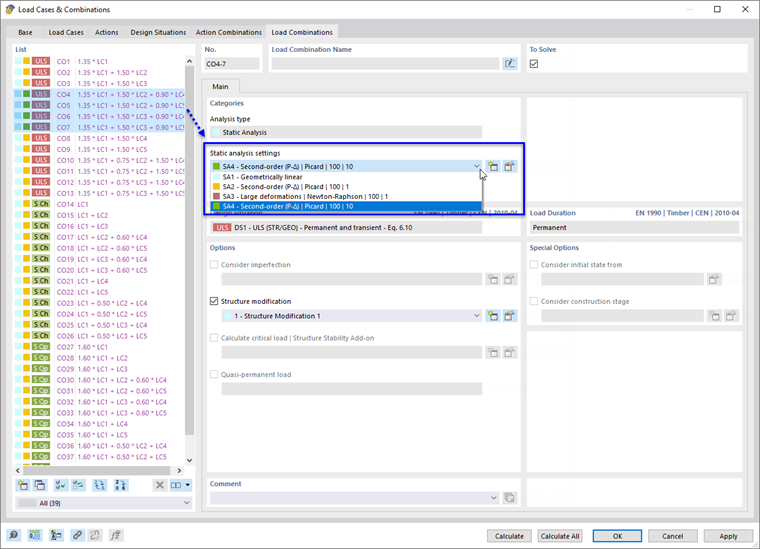The calculation according to the second-order analysis (also: P-Δ) determines the equilibrium in a deformed system. This allows deformation effects due to loading to be determined; these effects influence the distribution of internal forces. Axial forces in the structural system usually lead to an increase of bending moments: For members subjected to pressure, additional moments arise, leading to overlinear effects of loads and moments. Tension forces, by contrast, reduce the load.
In RFEM and RSTAB, it is possible to calculate load cases and load combinations according to various methods of analysis. They must each be assigned as Static Analysis Setting. Result combinations, by contrast, superimpose the results of the calculated load cases and combinations, so that the calculation method can only be controlled indirectly.
The calculation according to the second-order analysis examines stability problems; for example, buckling. The Steel Design add-on also allows you to perform the stability analysis considering lateral-torsional buckling. The Warping Torsion add-on performs an analysis according to the second-order analysis with 7 degrees of freedom (warping torsion).
For steel structures, calculations must be made according to the second-order theory if the compressive force in the member exceeds 10% of the ideal critical load [4]. For concrete structures, certain limiting slendernesses are governing. Timber structures are usually calculated according to the linear static analysis.
Example
The load of a column is analyzed according to the linear static analysis and the second-order analysis. A vertical load with a small horizontal load acts on the column head. The axial force has no influence on the moment distribution My in LC 1. However, the additional moment according to the second-order analysis is clearly recognizable in LC 2. If the load is further increased (or the cross-section is reduced), the program will display a message about the instability.

